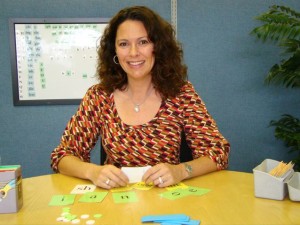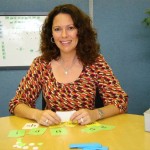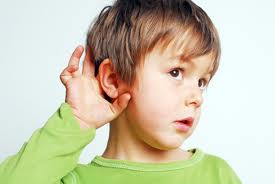
by PRIDE Reading Program Admin | Apr 12, 2015 | A PRIDE Post, Dyslexia
Parents are always asking me what they can do to help their dyslexic child. My first response is to most importantly get the child into an Orton-Gillingham program that will give them the necessary skills for reading, writing and spelling improvement. This will need to be done by a trained specialist and should be the number one priority for the dyslexic child.
Keep in mind that the trained dyslexia professional is helping your child by doing the difficult work for you. They are doing reading activities and skill training. It won’t necessarily be for fun and pleasure. So, this is the perfect time that you as a parent get to just read together with your child for fun and pleasure. This is what you the parent can do to give your child the dyslexia help at home they need.
Most likely you will be working with your child after school when they are tired and less receptive to learning and when you, too, are not at your most energetic or patient, therefore, I recommend that you read together with your child for at least thirty minutes each evening making it fun and not a chore for either of you. Evenings spent reading together build a lifelong pattern of enjoyment. A child who avoids reading is among those most in need of practice and guidance, and is especially helped by your reading aloud with him.
When reading for pleasure, allow your struggling reader to relax and listen attentively without being expected to read. You should still encourage your child to sit next to you, so he can see the pages of the book as you read. If you are helping your child with a book that must be read for school, encourage your child to participate by taking turns reading; you can ask your child to read a sentence or a paragraph, then read several paragraphs yourself, then let your child have another turn.
In books with a lot of dialogue, another technique for shared reading is to let your child take the role of one (or more) or the characters, reading the quoted words for that character. This is also a good opportunity to help your child focus on punctuation, such as quotation marks, commas, periods, exclamation points, and question marks. Many children with dyslexia do not understand what punctuation means, and they tend to ignore or disregard punctuation marks when reading because they are so focused on trying to decipher the letters and words. With oral reading, punctuation takes on added significance, as it provides information about when the reader should pause and the intonation that should be used.
When your child is reading aloud, do not interrupt to correct mistakes that do not change meaning, such as reading “mom” for “mother.” Frequent interruptions will cause your child to lose confidence and make comprehension more difficult. If your child stumbles over a word, simply tell her what it is. Do not try to use teaching techniques such as having her sound out words at this time. Instead, enjoy the story together, discuss the plot, and praise your child for her efforts when she reads aloud and is able to figure out some words on her own.
Your child may find it helpful to hold an index card or ruler under each line of text as he reads. This will help him stay focused on the text. It is also possible to purchase a reading guide with a colored filter in the center, which is designed so that your child can move it down the page as he reads.
Some children prefer fiction while others prefer nonfiction. By pairing them, your child will be exposed to both genres. Your child will also love discussing these books together with you.
Because a child with dyslexia needs very individualized and specialized reading help, I recommend that parents become the child’s biggest helper. Teaching a child with dyslexia how to read is a complex task, but with a loving touch and good humor, you the parent can most definitely accelerate your child’s progress.
Learn more about the New PRIDE Reading Program
____________________________________________________________________________________

Karina Richland, M.A. is the Founder of PRIDE Learning Centers, located in Los Angeles and Orange County. Ms. Richland is a certified reading and learning disability specialist. Ms. Richland speaks frequently to parents, teachers, and professionals on learning differences, and writes for several journals and publications. You can visit the PRIDE Learning Center website at: www.pridelearningcenter.com

by PRIDE Reading Program Admin | Feb 22, 2015 | Pride Yorba Linda
PRIDE Learning Center announces the opening of its seasonal location in Yorba Linda.
PRIDE Learning Center, which specializes in tutoring students with learning disabilities and special needs, will provide instruction this summer at a Seasonal Learning Center in Yorba Linda, located at the North Orange County Chabad Center, 19045 Yorba Linda Boulevard.
Summer instruction for children will be available 9:00am – 12:00pm Monday – Friday from June – August.
This summer program is designed for children of all ages who are struggling with reading, writing and comprehension due to the diagnosis of dyslexia, auditory and visual processing disorder, autism, speech delays and other learning difficulties. The PRIDE Learning Center program is based on Orton-Gillingham research, which uses the multisensory elements of seeing, hearing, touching and moving.
“The Yorba Linda Learning Center is an extension of our Orange County Learning Centers which allows more families in the Yorba Linda community to get the help they need for their children,” states Karina Richland owner of PRIDE Learning Centers. “Our goal at PRIDE, as it has been at all of our locations, is to deliver the highest level of instruction possible and help every child out there, even those that many teachers have given up on.”
The teachers at PRIDE Learning Center are all credentialed and Orton-Gillingham certified instructors with strong special education backgrounds. The Center is an NPA (non-public agency) and contracts with many school districts in the Yorba Linda community.
“PRIDE Learning Center has helped so many students learn how to read,” says May Dabbah, director of the Yorba Linda Seasonal Learning Center. “I see students improve dramatically in just one summer. I am so excited for the Yorba Linda Community to experience and be a part of our wonderful program.”
Individuals interested in summer instruction can call (949) 484-0230 or email info@pridelearningcenter.com. The PRIDE Learning Center website is www.pridelearningcenter.com

by PRIDE Reading Program Admin | Feb 14, 2015 | A PRIDE Post, Reading Disability
Reading is an important first step on a child’s path to success in life. A child that is an excellent reader is a confident child, has a high level of self -esteem and is able to easily make the transition from learning to read to reading to learn. For many of us reading is a natural process and we can read with ease and pleasure. Unfortunately, for a child with a reading disability, the reading process can become a frustrating and negative experience and is often very difficult to master.
What is a Reading Disability?
A reading disability is an inherited condition that makes it extremely difficult to read, write, and spell despite at least an average intelligence.
Learning to read is a sequential process. Each new skill a child learns builds on the mastery of previously learned skills. First, a child learns to break down words into their most basic sounds, which we call decoding. Later on, the child begins to comprehend the meaning of words and sentences, which we call reading comprehension. Decoding is an essential step in the reading process since it forms the foundation of reading. For a child with a reading disability, decoding does NOT come naturally and is NOT an automatic process. Most reading experts will agree that decoding problems is the basis of most reading disabilities.
Does my child have a reading disability?
Some signs of a reading disability:
- Child has difficulties sounding out words
- Slow laborious reading
- Reads without expression
- Ignores punctuation while reading out loud
- Guesses based on first letter of word
- Puts extra sounds into a word
- Drops syllables
- Reverses sounds
- Struggles with spelling
- Substitutes small common words
If your child is struggling in reading and showing the above symptoms, there may be good reason for you to request an immediate assessment. As a parent you want to be certain that you are providing what is needed for your child to succeed in school. To know what is necessary, an assessment is the first thing to do in order to identify the issues to remedy.
What is an assessment?
An assessment is simply a standardized test performed by someone trained and licensed to understand how to give the test and how to interpret the results. Specialists trained to do psychological testing and result interpretation are:
- Clinical psychologist
- School psychologist
- Educational psychologist
- Developmental psychologist
- Neuropsychologist
- Speech and language therapist
How do I get help?
A child with a reading disability will take in and process information differently and needs to be taught by specialists. Students with a reading disability will need to work with a specially trained teacher, tutor, or reading specialist to learn how to read and spell. Students who have been assessed and diagnosed through the school district might qualify for Special Education Services. Children with a reading disability progress best with a sequential, repetitive, systematic and cumulative structured reading program. Fortunately, with the proper assistance and help, most students with a reading disability are able to learn to read and develop strategies to become successful readers.
When is the best time to get help?
Effective early intervention is the key to helping a struggling reader learn to read. This training needs to begin sooner rather than later for the bet results. According to the National Institute of Health (NIH), 95% of children who have trouble learning to read can reach grade level if they receive specialized help early on. Kindergarten to the middle of first grade are the “window of opportunity” to prevent long term reading problems. Without early intervention, the “reading gap” might never close.
There is no reason why a child with a reading disability cannot learn to read and comprehend well. It is important that we never lower the expectations of a child with a reading disability. Children need to feel that even though they are struggling, they are loved and not being judged. So be encouraging and patient and praise often.
Learn more about the New PRIDE Reading Program
Karina Richland, M.A. is the Founder and Director of Pride Learning Centers, located in Los Angeles and Orange County. Ms. Richland is a certified reading and learning disability specialist. Ms. Richland speaks frequently to parents, teachers, and professionals on learning differences, and writes for several journals and publications. You can reach her by email at karina@pridelearningcenter.com or visit the Pride Learning Center website at: www.pridelearningcenter.com

by PRIDE Reading Program Admin | Feb 9, 2015 | A PRIDE Post, Reading Comprehension
You can help your child improve their reading comprehension by just doing this one really easy activity. It will take about 20 minutes each day for a few weeks. Be sure to approach it lightly and make it a fun, bonding and motivating activity.
Here is what you do:
- Explain to your child that predicting is making guesses about what will come next in the text you are reading. You should make predictions often when you read. Start with the title and ask your child what he or she thinks the story will be about. Pause and stop frequently as you read, discuss if your predictions were correct, and make new predictions.
- If your child is having troubles with predictions, model the process for him or her by making your own predictions. You can simply say, “I am going to make predictions while I read this book. I am going to start with the title.” Explain what you think will happen.
- Make predictions collaboratively with your child. Suggest that from a certain section on you want him or her to make predictions with you. You should both stop and think about what might happen next and then discuss your thoughts together.
- After much guided practice, it is time to let your child read silently without your help. Remind your child to be sure to make predictions often and to check as he or she reads to see whether the predication came true.
Make sure as you are reading together with your child that you pay careful attention to the level and demand of the text. When children are first learning reading comprehension strategies, they should encounter texts that do not make heavy demands in terms of extensive background knowledge, complex vocabulary, or unknown decoding skills.
Also, the level of motivation that your child has towards the text will impact whether and how he or she will use comprehension strategies. Best is to allow your child to pick out their own reading material that excites, motivates and interests him or her.

Karina Richland, M.A. is the Founder of PRIDE Learning Centers, located in Los Angeles and Orange County. Ms. Richland is a certified reading and learning disability specialist. Ms. Richland speaks frequently to parents, teachers, and professionals on learning differences, and writes for several journals and publications. You can visit the PRIDE Learning Center website at: www.pridelearningcenter.com

by PRIDE Reading Program Admin | Jan 28, 2015 | A PRIDE Post, Auditory Processing Disorder
If your child has auditory processing and finds it difficult to concentrate and retain information, here are a few fun activities that you and your child can do together that will target and improve auditory processing skills:
Practice sequencing with sounds
Ask your child to cover his eyes with his hands while you make a noise such as closing the door, sneezing, or playing a key on the piano. Have your child first identify the noise. Then try two noises, one after the other. Your child will then identify the two sounds in sequence. Add the number of sounds in the sequence until your child gets tired with the game. Some ideas for noises are:
- Whistling
- Snapping fingers
- Sharpening a pencil
- Hammering
- Tearing paper
- Slamming a book closed
- Ringing a bell
- Blowing a whistle
- Clapping
- Coughing
- Drumming with fingers
- Hammering
- Crumpling paper
- Unwrapping candy
Name the mistake
Recite or read aloud a familiar text, poem or rhyme changing its words or wording. Your child should raise his hand whenever an error occurs. You can change the words, grammar, phonemes and meaning. Also, you can swap word order or word parts. Here are a few examples:
- Once a time upon…
- Old McDonald had a fern…
- Twinkle, twinkle little car…
Clapping syllables
Start out by pronouncing each family member’s name by clapping it syllable by syllable. Then ask your child to say and clap the name along with you. Each clap represents a syllable or word part. After each name has been clapped ask, “how many syllables did you hear?” You can also have your child place two fingers under her chin, so that she can feel her chin drop for each syllable. This also allows your child to feel the vibration of each syllable.
Sound substitution
In this activity, your child will make new words by replacing the first sound in the word with the target sound. For example, target the phoneme /l/. Ask your child to substitute the /h/ in ‘hand’ with /l/. The word now becomes ‘land.’
Sound sort
Make picture cards using magazines or computer art. Glue the pictures on index cards and laminate them if you can. Spread selected pictures in front of your child and ask him to find the picture whose name starts with a certain sound. As each picture is found, have your child name the picture and the initial sound. For example you can say, “what picture begins with the sound /s/?” Your child might respond “Snake, /s/.” Examples of some pictures include:
Picture guess
Using the same pictures, place them in a bag. Pick out a picture from the bag and don’t show it to your child. Pronounce the name of the picture, phoneme by phoneme. For a picture of a cat, you will say /c/ /a/ /t/. Then your son guesses what the picture is from your isolated sounds. Take turns guessing each other’s pictures.
Listen for sounds
Have your child sit on the floor, close his eyes and identify sounds that you make. You can drop a pencil, bounce a ball, tap on the window, use a stapler, cut with scissors, sip on a cup of coffee or type on your computer. Trade roles and then let the child make different sounds that you have to identify.
Outside noises
Sit outside under a tree with your child. Listen for various sounds like birds chirping, airplanes flying overhead, cars driving by, voices of children playing are pretty fun to identify. You can have a little notebook on hand and keep a list of all of the different sounds you come across.
Repeat after me
Sit across from your child and clap your hands to a rhythmic pattern alternating between slow and fast tempos. Have your child repeat the pattern. You can also use various instruments, play a drum or bounce a ball to a variety of rhythms. Switch roles and let your child be the sound leader as well.
Hide and seek
Hide a metronome or a ticking clock somewhere in your home. Have your child find it by locating the sound. Another variation of this game can be played outside. You can hide somewhere and blow a whistle. The child will then follow the sounds to find where you are hiding.
Read rhyming books
Repetitive rhyming books help children listen carefully to the similar sounds of rhyming words. Some great rhyming books are “Hop on Pop”, “Fox in Socks”, Goose on the Loose” and “Goodnight Moon.”
Sing songs
Sing songs together that involve repeating previous verses, such as “Old MacDonald Had a Farm”, “Over in the River”, “The Twelve Days of Christmas” and “The Green Grass Grows All Around.”
Practice focusing
Read a very simple story to your child with soft music playing in the background. Before reading the story, tell your child to listen for specific pieces of information in the story (for example the main characters name). You can gradually increase the difficulty of the information you want your child to listen for.
Comprehension check
Read an unfamiliar story to your child. Afterwards ask your child questions about the sequence of events. What happened first, who went to the game, etc. Continue to ask questions until the events in the story have been reviewed. You can also ask your child to predict likely events in the story.
Karina Richland, M.A., is the Founder of PRIDE Learning Centers, located in Los Angeles and Orange County. Ms. Richland is a certified reading and learning disability specialist. Ms. Richland speaks frequently to parents, teachers, and professionals on learning differences, and writes for several journals and publications. You can reach her by email at karina@pridelearningcenter.com or visit the PRIDE Learning Center website at: www.pridelearningcenter.com







